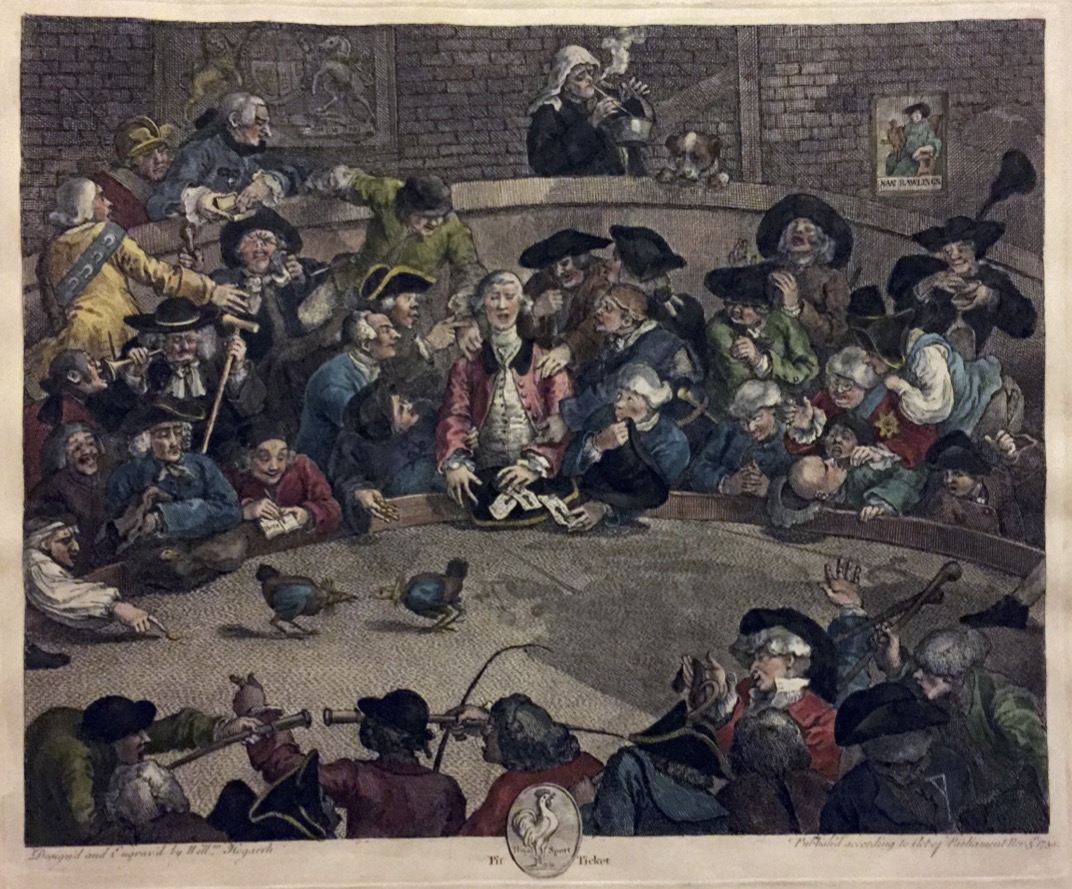Rituals of Spectacular Humiliation and Violence
Recreational rampages against other animals have been part of human society forever. In England, for example, bull-baiting, bull-running, badger-baiting, bear-baiting, dog fights, cockfights, cock-throwing, bird-shooting parties, fox hunting and other animal-abusing sports were routine and in some rural enclaves today undoubtedly still are. In rural America, sadistic entertainments such as “hog bagging” are proudly hailed by communities steeped in traditions of explicit animal torture for which people are invited to “spend the day and bring the kids.”
Socializing children into compliance with their parents and the adult community is an important part of these events in which child abuse and animal abuse converge. Children with violent tendencies are encouraged to be vicious while sensitive children are bullied into submission with the animals. The adults do to their children what their own enforcers did to them, displacing their fear of “their fellow man” and nature onto creatures they Do Not want to be identified with for fear of Other People – the adults who were themselves cowered, baited, bullied and rewarded into submission to “community standards.”
Robert W. Malcolmson in Popular Recreations in English Society 1700-1850 notes that “Human beings, it seems, have always had a strong disposition to manipulate animal life for ‘sporting purposes.’” For example, he quotes an 18th-century description of cock-throwing, which consisted of hurling cudgels and broomsticks – “scails” – at roosters tied to a stake, an activity that was part of the pre-Lent saturnalia of Shrovetide (Mardi Gras), the carnival season:
And thus their legs are broken and their bodies bruised in a shocking manner . . . and wonderful it was that men of character and circumstance should come to this fine sight and readily give their children a cock for this purpose.

The Cockpit (1759) by William Hogarth
Cockfighting was already established in England by the time the Romans took over in the first century CE. “There is nothing more diverting,” according to an 18th-century enthusiast quoted by Malcolmson. Rituals of animal abuse such as cockfighting have frequently been justified not only as acceptable outlets for human aggression; they have been sentimentally defended as social levelers in which Men of All Ranks could join together in a common enterprise etched in “the inner recesses of the masculine psychic life,” say Page Smith and Charles Daniel in The Chicken Book. Whatever else might have brought men together on English social occasions in the past, Malcolmson writes that the “common denominator was particularly noticeable in the practice of animal sports.”
In An Unnatural Order: Uncovering the Roots of Our Domination of Nature and Each Other , Jim Mason identifies two basic types of animal abusing entertainment: “rituals of spectacular violence” and “rituals of spectacular humiliation.” These rituals overlap, but in terms of emphasis, whereas rituals of spectacular violence “reinforce myths about vicious animals and evil nature,” rituals of spectacular humiliation “reinforce myths of animal stupidity, inferiority, and willingness to submit to human domination.”
Viewed thus, cockfighting is a ritual of spectacular violence, the circus is a ritual of spectacular humiliation, and rodeos manifest the convergence of both types of ritual with an emphasis on humiliating animals raised to be slaughtered for food. Roping baby calves, goats and chickens epitomizes the Ritual of Humiliation: they enact a human desire to degrade and defeat the defenseless among us. Ironically, those who defend these rituals will insist that those who oppose them are anthropomorphizing the animals.
Such rituals do not explain away easily. At a deep, if conflicted, level they testify to a hatred many human cultures have had for nonhuman animals through the ages, rooted in our hatred of ourselves for being animals (vulnerable, ephemeral mortals subject to dusty death and not “divinity”), which we project onto them. In An Unnatural Order, Jim Mason calls this hatred of the animal misothery. He writes:
I have coined the word misothery (miz OTH uh ree) to name a body of ideas that we are about to discuss. It comes from two Greek words, one meaning “hatred” or “contempt,” the other meaning “animal.” Literally, then, misothery is hatred and contempt for animals. And since animals are so representative of nature in general, it can mean hatred and contempt for nature— especially its animal-like aspects.
He continues:
I deliberately constructed the word misothery for its similarity to the word misogyny, a reasonably common word for an attitude of hatred and contempt toward women. The similarity of the two words reflects the similarity of the two bodies of attitudes and ideas. In both cases, the ideas reduce the power, status, and dignity of others.
At the same time that many human rituals and institutions exhibit rampant misothery toward nonhuman animals and the “degrading” condition of animality, because we are animals and because the knowledge that we are animals is embedded in our biology and in our status as creatures rooted in the natural world, we are ambivalent. Hence, human misothery toward animals and the condition of animality may be considered “hypocritical” in the cautiously optimistic sense offered by Eli Sagan in Cannibalism: Human Aggression and Cultural Form, in which he says that we must “treasure and expose that hypocrisy, because within it we will find the possibilities of further change.”
A basis for cautious optimism is the amity that many people feel for animals, which may be gaining ground on the animus that has distorted so much of our relationship with other species and nature and that is contributing, together with economic ruthlessness, to the destruction and deformation of both nature and animals. – Karen Davis